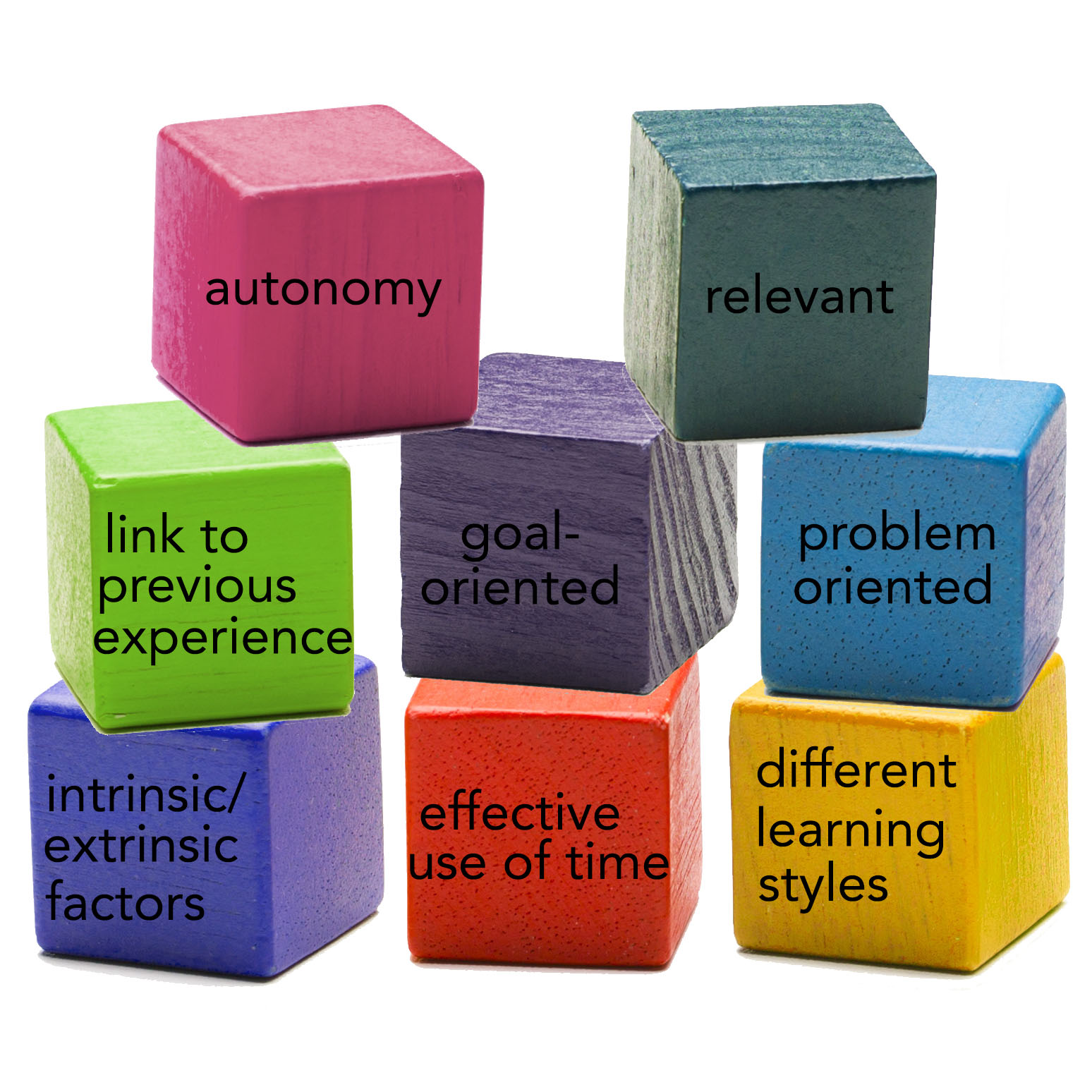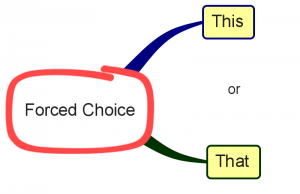Tips for Supporting Attitudinal Shifts
By Michael Everett, MHS | July 5, 2018
Project Co-Director, ETR
Why do we deliver trainings? To share information, to build new skills—and sometimes, to help people get a whole new attitude. In my previous post, I discussed the ways emotions and feelings can influence attitudes, along with the importance of helping training participants succeed in achieving positive attitude shifts.
When participants can look honestly and thoroughly at the emotions and feelings that shape their attitudes, they’re in a better place to make a shift. This can allow them to do their work more effectively, supporting their clients in open, non-judgmental ways.
In this post, I share two of the resources I’ve used in trainings to help make those shifts. One is a training activity. The other is a guide to matching adult learning principles to trainings that address attitudes.
A Training Activity: This or That
"This or That" is a Forced Choice exercise—a perfect resource for values clarification. Most of you have facilitated these kinds of activities before. You read a list of values-based statements and have participants move to different places in the room to show whether they agree or disagree with each statement.
With a few adaptations, this is also a fine activity for supporting attitudinal shifts.
This particular version of the Forced Choice was designed by Intimacy & Colour, LLC.
Context: We did this activity in the training Cultural Humility in Practice for HIV/AIDS Care. The focus was service providers working with at-risk Black men who have sex with men, and transgender male-to-female communities of color.
Materials:
- One “Agree” sign
- One “Disagree” sign
- The list of values-based questions (see “Preparation”)
- Tape and wall space
Preparation:
Develop your list of values-based questions, tailored to the specific issues being addressed in your training. We recommend you start with the least controversial questions and move to those that are most controversial.
Questions that create limited vulnerability (and are therefore easiest to answer) can explore things people enjoy doing. They might start with phrases such as, “I enjoy,” or “I like,” or “I do not enjoy/like.”
Questions that create mild to moderate vulnerability begin to examine attitudes and beliefs, and might start with phrases such as, “I think everyone should…” or “I believe most people would…”
Questions that create considerable vulnerability explore stronger or more absolute social attitudes. They might start with phrases such as, “It is wrong for people to…” or “People should never be allowed to…” or “The only right choice for someone who has….”
Steps
- Read the first question. Ask people to move to the appropriate section of the room (e.g., by the “Agree” or “Disagree” sign).
- Discuss in full group. After people have moved to their chosen places, ask a few participants from each group to share their reasons for their choice.
Tip: Don’t ask participants to discuss with one another at this point. The conversation will stay more neutral and productive with a facilitator in charge.
Tip: Start with the agree/disagree group that has fewer people.
- Discuss in small groups. After both teams have discussed their answers, ask participants to create small groups that include members on both sides of the issue. Ask them to discuss the following question: “How might the values reflected in this question be different in the context of Black MSM?” (or the priority population being explored). This gives participants the opportunity to step out of their own motivations for their belief, then practice critical thinking about advocating for the vulnerable population.
- Repeat. Repeat the process above with the remaining questions.
- Debrief. Debrief with the full group by helping your audience make connections between when it is important to defer to our own personal belief system, and when it might be appropriate to adapt a belief or approach for the benefit of the vulnerable communities we work to support.
A Guide for Adult Learning Strategies
Adult educators have been using principles outlined by adult learning theory since Eduard C. Lindeman's pioneer paper in 1926, The Meaning of Adult Education. Today, there are many versions of adult learning principles, but the central points are nicely summarized in this whitepaper by the Adayana Group. After conducting hundreds of trainings both face-to-face and virtually, I have found these principles represent approaches that are critical to balancing both safety and challenge. They are excellent foundations to set the tone for attitudinal shift during training.
Below, I’ve listed the principles and their objectives. These help us conceptualize how to integrate adult learning principles in order to support critical attitudinal shifts.
Adult Learning Principles
- Adults are autonomous and self-directed.
- Support attitudinal shift by providing general instruction, but allow room for adults to explore.
- Adults bring knowledge and experience to each learning activity.
- Support attitudinal shift by acknowledging and using the expertise of your audience.
- Adults need learning to be relevant and practical.
- Support attitudinal shift by covering content and asking questions in line with the immediate needs of your audience. Identify present barriers and practical ways to address them.
- Adults are goal-oriented.
- Support attitudinal shift through transparency of intention for each activity, as well as for the overall training.
- Adults are problem-oriented.
- Support attitudinal shift by making connections between in-class theory and at-work practice.

- Adults are motivated by intrinsic and extrinsic factors.
- Support attitudinal shift by capitalizing on learner motivation. This is higher when the content is new and the process for learning is different. Don't be afraid to move around (literally—get people up and moving around the room).
- Adults are pressed for time.
- Support attitudinal shift by being respectful and managing time. Focus on creating a valuable learning experience. Avoid filler content and activities that cover information that is "nice to know" but not critical to the learning.
- Adults have different learning styles.
- Support attitudinal shift by honoring the diversity within each learning group. Cover your most important content using multiple learning styles (auditory, visual, kinesthetic, tactile).
Respect the Opportunity
I love being a trainer, and I consider it a privilege to work with the people who come to our professional development events. People show up because they want to do the best work they possibly can. As facilitators, we bring commitment and respect to the process by recognizing the power of positive attitude shifts, and giving participants tools to be better in their work.
What tools have worked in your trainings? I'd enjoy hearing about other ways facilitators are working with these issues.
Michael Everett, MHS, is a Project Director at ETR. He can be reached at michael.everett@etr.org.






